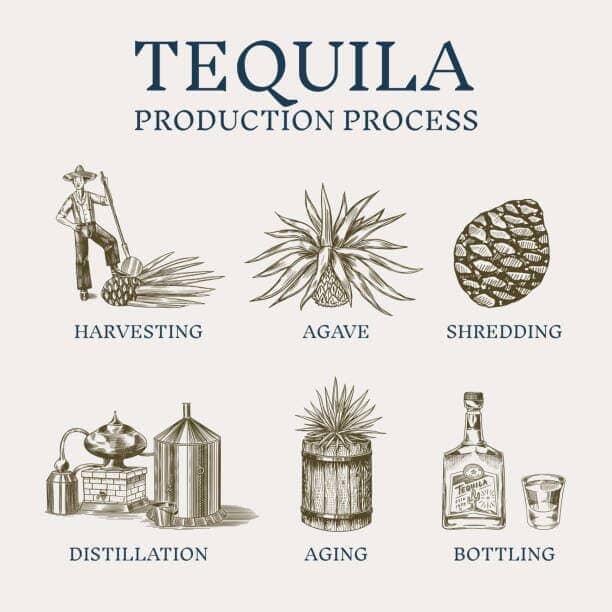Your Cart is Empty
- Gift Sets
- Wine
- Beer & Cider
- Spirits
- Champagne
- Flower & Chocolate
- Soft Drinks

Immerse yourself in the captivating world of tequila, a spirit that dances on the taste buds of millions globally. Among the plethora of brands that vie for attention, Don Julio stands as a beacon of quality and craftsmanship. In this riveting article, we invite you to embark on a journey through the intricate Don Julio tequila production process. We explore its deep-rooted history, superior ingredients, and meticulous techniques that set it apart in the tequila landscape.
The saga of Don Julio began in 1942 in the highlands of Jalisco, Mexico. A visionary named Don Julio González dreamt of creating a tequila that would leave a memorable impression with its intricate flavors. His passion and unwavering dedication led to the birth of the Don Julio brand, a name that now shines as a hallmark of luxury and quality in the tequila realm.
In the present day, Don Julio remains true to its founder's vision. It employs traditional techniques and top-tier ingredients to craft a tequila that wins the hearts of both aficionados and casual drinkers. The brand's spirit of innovation is evident in its diverse range of expressions and limited editions like the Don Julio 1942 Luminous Magnum, catering to an array of palates and preferences.
The soul of any exceptional tequila is the agave plant. Don Julio exclusively uses the Blue Weber Agave, a variety native to Mexico. It thrives in the mineral-rich volcanic soil of the highlands of Jalisco. This unique environment imbues the agave with distinct flavors and characteristics, resulting in a tequila that is as complex as it is smooth.
The agave plants are tenderly cultivated and nurtured for 7-10 years before they are deemed ready for harvest. Expert jimadores select the ripest plants, skillfully removing the leaves to reveal the heart, or piña, of the agave. These piñas are then transported to the distillery, heralding the beginning of the production process.
The journey of the piñas continues as they are cut into smaller fragments and placed in traditional masonry ovens, or hornos. Here, they are slow-cooked for 72 hours, a process that allows the complex sugars within the agave to caramelize, creating the rich, sweet flavors that serve as the foundation of Don Julio tequila.
Once cooked, the softened piñas are crushed in a milling process to extract the sweet agave juice, or mosto. This mosto is then collected and readied for the next stage: fermentation.
The mosto embarks on its transformative journey in the fermentation tanks. Here, natural yeasts are introduced, converting the sugars in the mosto into alcohol over several days. The master distiller at Don Julio attentively monitors this process to ensure the development of the desired flavors and aromas.
The fermented mosto, now called tepache, is then subjected to a double distillation in traditional copper pot stills. The first distillation, known as the "destructive distillation," eliminates impurities and separates the alcohol from the water. The second distillation, or "rectification," refines the spirit even further, producing a crystal-clear tequila with a smooth and rich taste profile.
Don Julio offers various expressions of its tequila, each undergoing a unique aging process that imparts different flavors and characteristics.
Don Julio Reposado rests for a minimum of eight months in American white oak barrels. This aging process gifts the tequila a golden hue and imparts subtle notes of vanilla, chocolate, and oak to its flavor profile.
Don Julio Añejo is aged for a minimum of 18 months in American white oak barrels. This allows the spirit to develop a deeper, amber color and more complex flavors. The additional aging time infuses notes of dried fruit, caramel, and oak into the tequila, creating a rich and velvety taste experience.
Don Julio's most luxurious expression, Extra Añejo, is aged for a minimum of three years in American white oak barrels. This extended aging process results in a dark amber color and an exceptionally smooth and complex flavor profile, with hints of chocolate, coffee, and oak.
#Donjulio1942 #Tequiladeliveryuk #Tequilagifts
Comments will be approved before showing up.